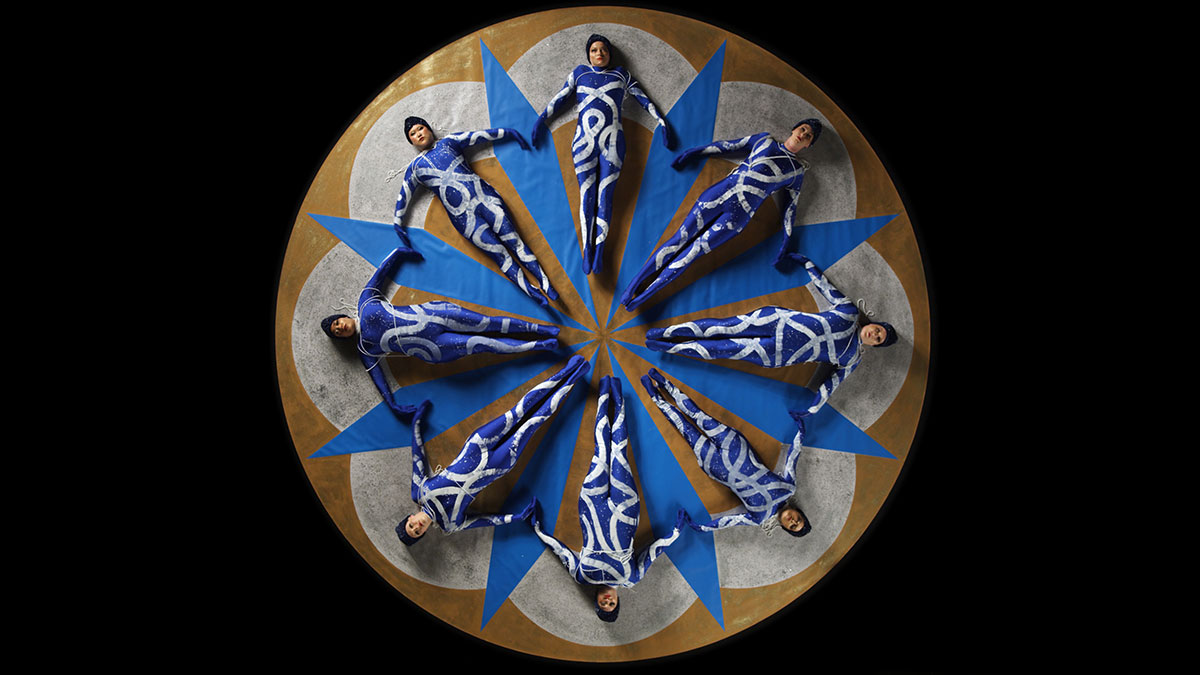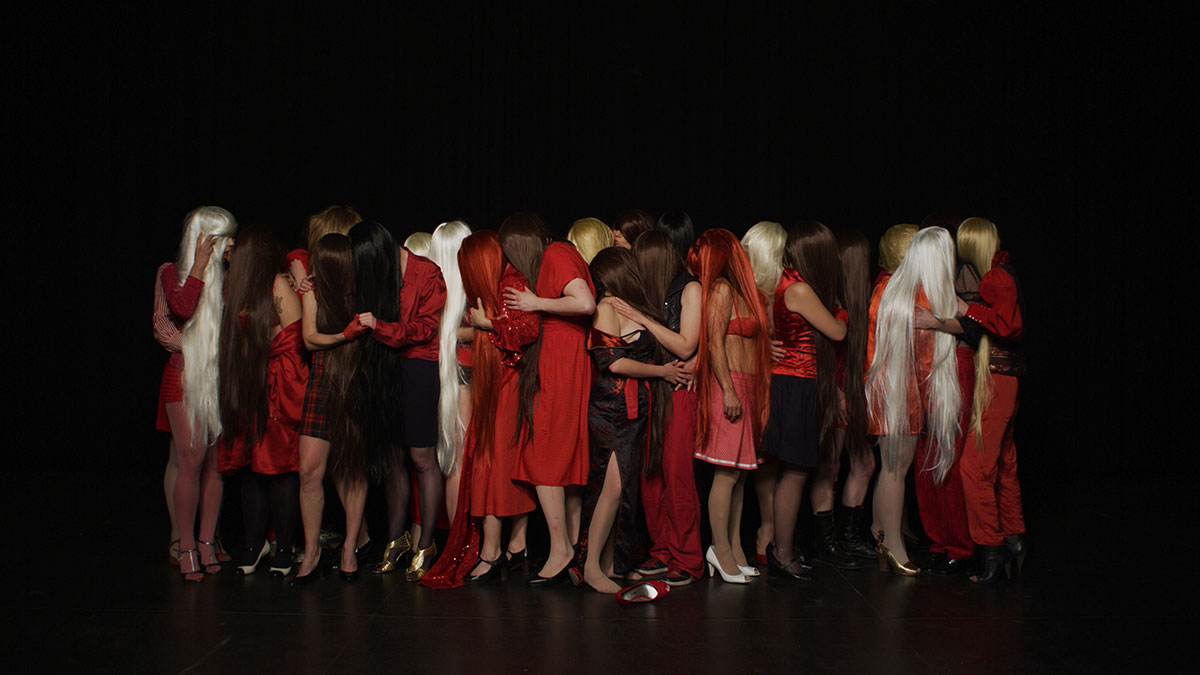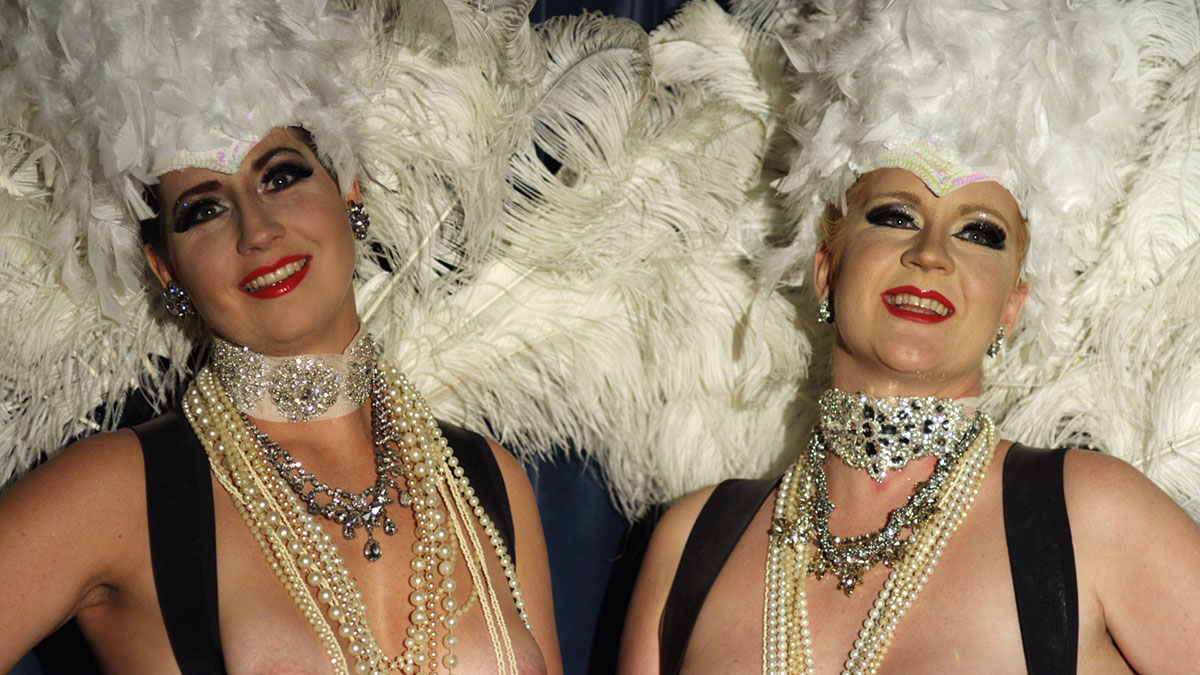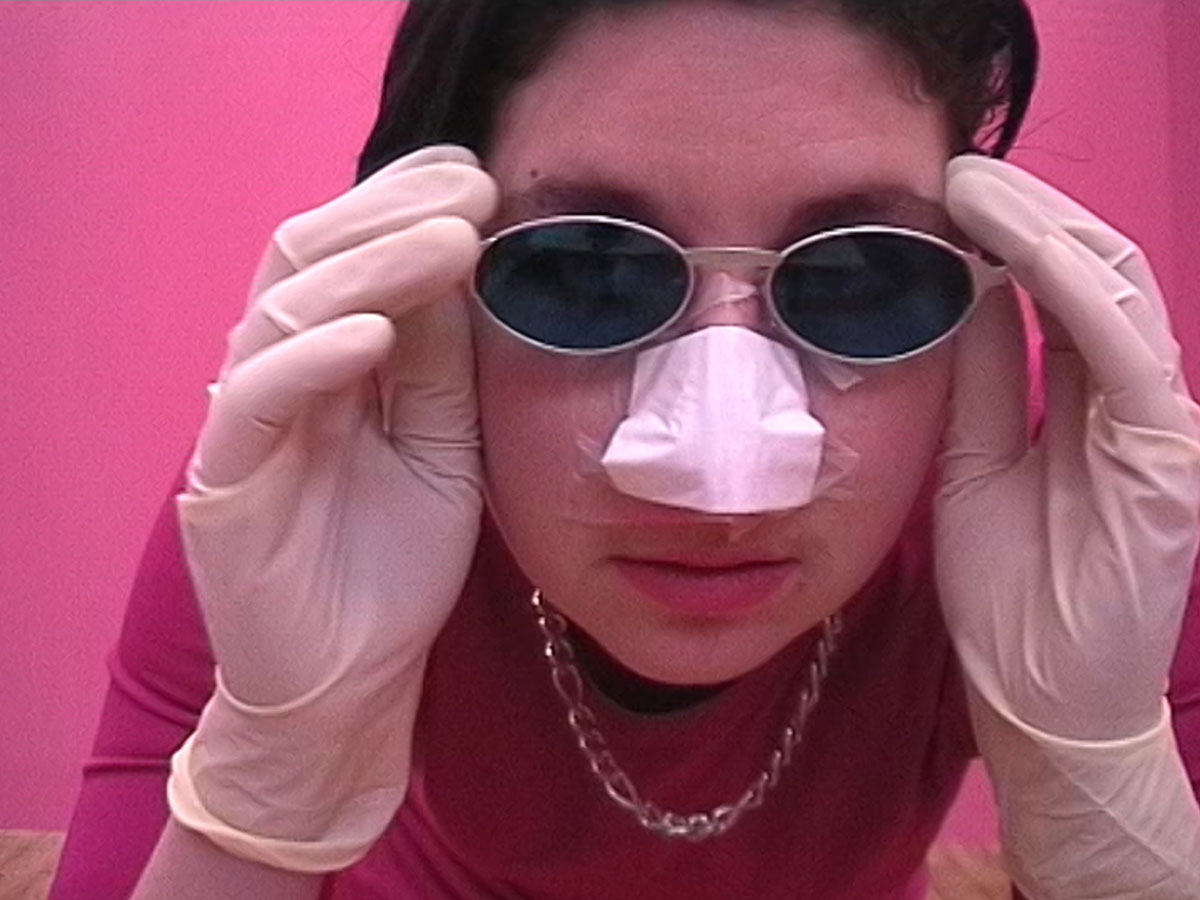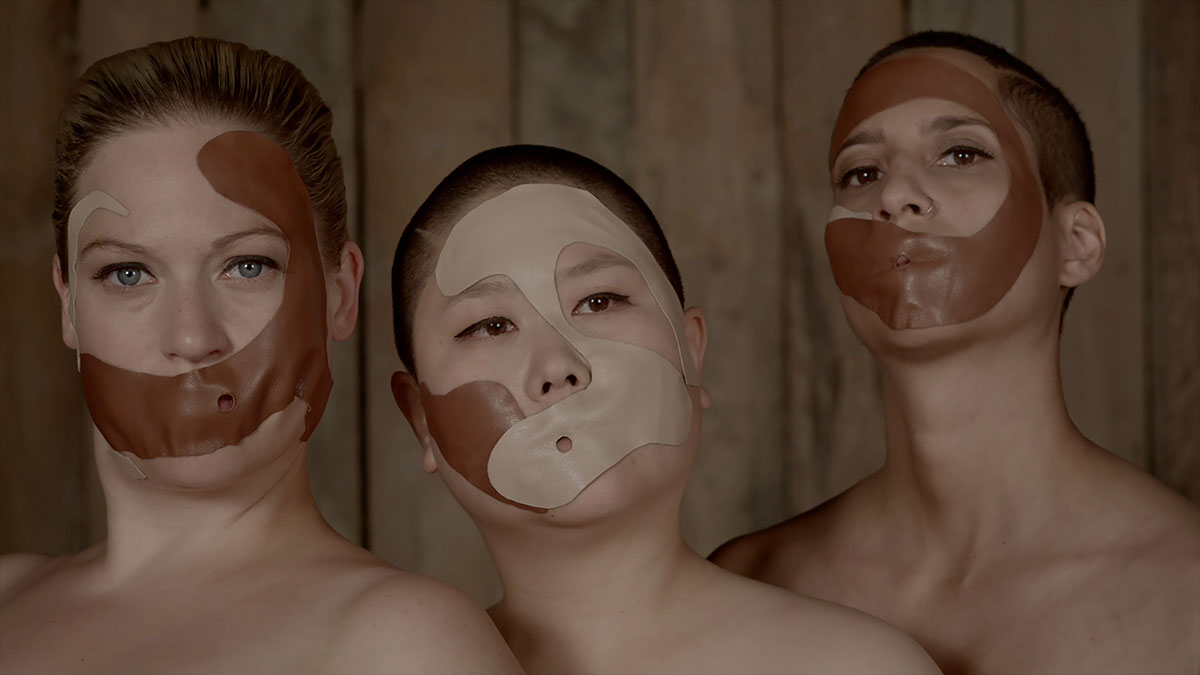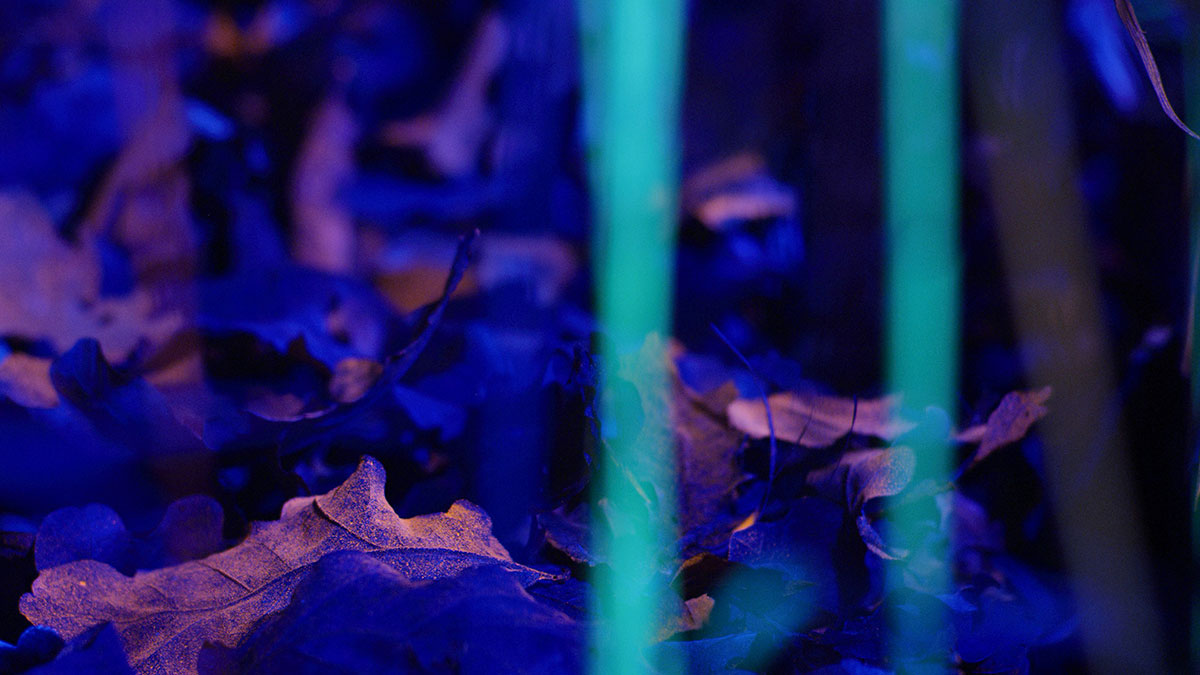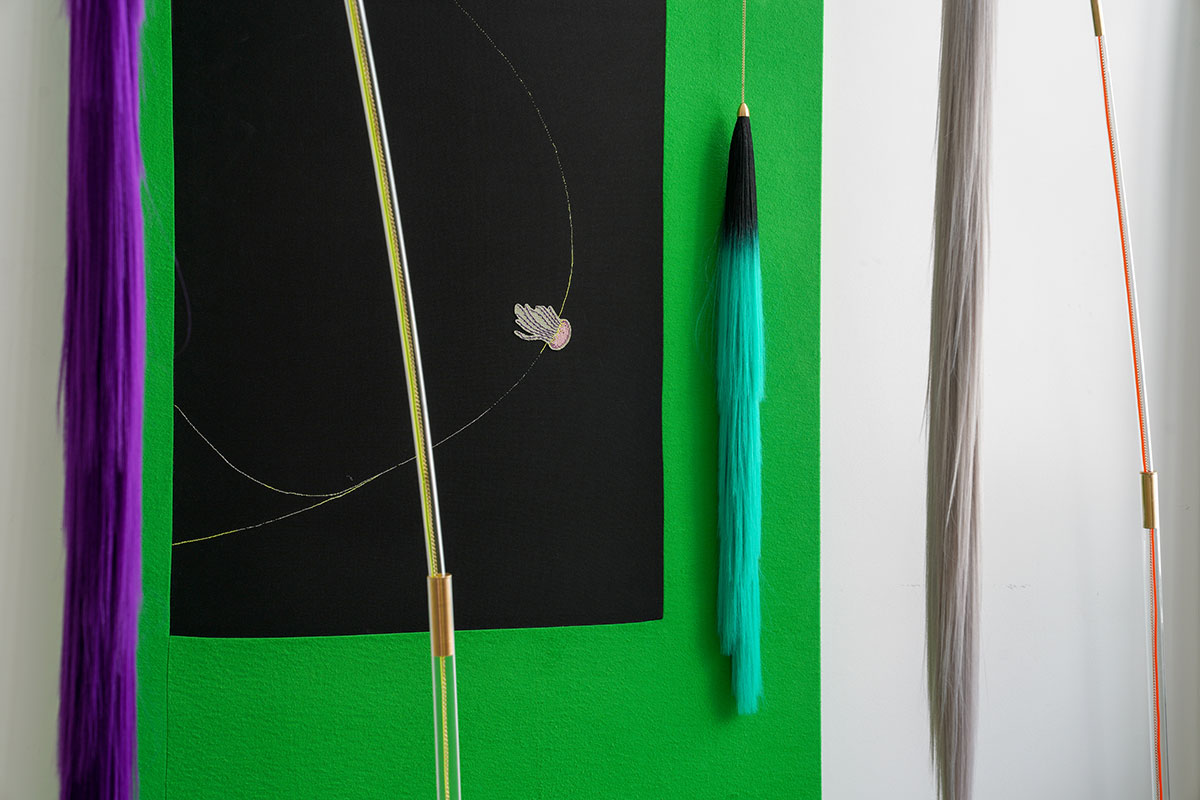PRESENTATION: Katrina Daschner-BURN & GLOOM! GLOW & MOON! Thousand Years of Troubled Genders
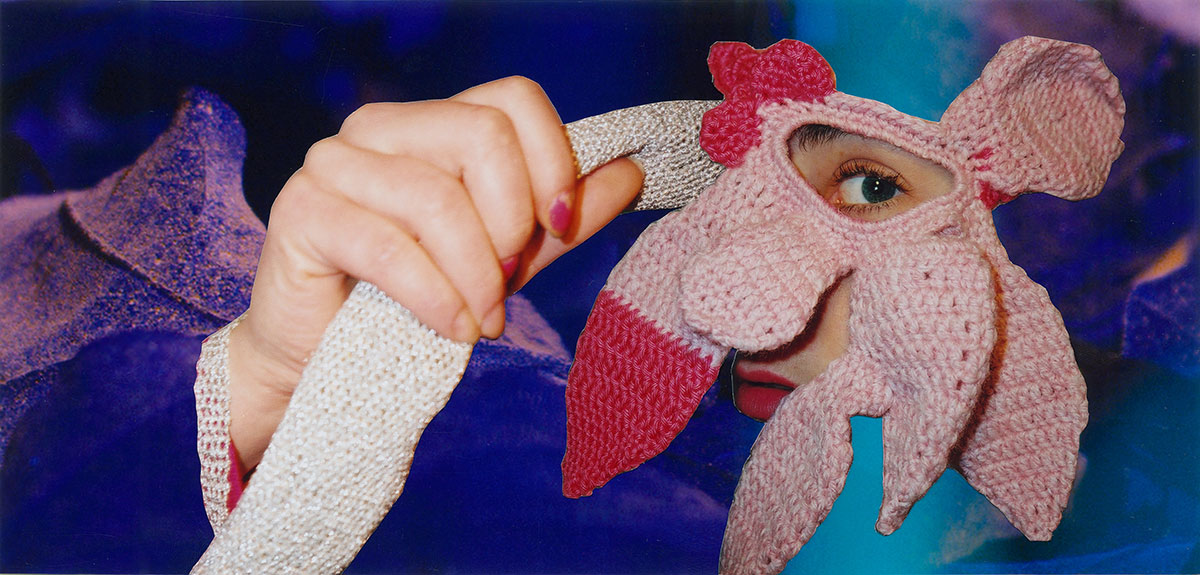 Katrina Daschner’s universe of self-reflexive glamour, which outs her inner gaze in myriad ways, is tightly woven around sensual imaginaries, glowing interventions into rigid patriarchal frames and community oriented corporealities. Daschner is a generous storyteller who holds love and pleasure, violence and resilience, death and rebirth together in the same palm. Nourished from an intersectional practice in film, performance and sculpture, her confronting and inviting image politics dances forward a fluid horizon of multiple embodiments in chorus. The stages of those cut and paste stories are where bodies dream and enact different potentialities of what else they can be, as hybrid extensions of nature.
Katrina Daschner’s universe of self-reflexive glamour, which outs her inner gaze in myriad ways, is tightly woven around sensual imaginaries, glowing interventions into rigid patriarchal frames and community oriented corporealities. Daschner is a generous storyteller who holds love and pleasure, violence and resilience, death and rebirth together in the same palm. Nourished from an intersectional practice in film, performance and sculpture, her confronting and inviting image politics dances forward a fluid horizon of multiple embodiments in chorus. The stages of those cut and paste stories are where bodies dream and enact different potentialities of what else they can be, as hybrid extensions of nature.
By Dimitris Lempesis
Photo: Kunsthalle Wien Archive
“BURN & GLOOM! GLOW & MOON! Thousand Years of Troubled Genders” is the most comprehensive exhibition to date of Vienna-based artist and filmmaker Katrina Daschner. The exhibition, encompasses works from the 1990s to the present and journeys through over two decades of intersectional and queering practices that continue to undermine (neo-)liberal, heteropatriarchal conceptions of sexuality, gender, subjectivity, and relationships. Daschner works with various closely interrelated media, ranging from sculpture, textile, music, performance, community-based work, and, most prominently, film, which sits at the heart of the exhibition as does collaboration, an integral and long-standing focus of her practice. Katrina Daschner’s artistic acts function like threads attaching her stories, stages, and characters together. In her textile-based works, threads are minimal yet highly visible, akin to the pinch needed to wake up from a dream. She uses particular green textiles to mimic green screens, which are used in film and television productions to allow the placement of any background image one desires behind the subject in postproduction. In her own filmic practice, Daschner has often used green screens behind glass to create a sense of “analog fade-ins”. For example, she rinsed paint over a screen in the making of her short film “Pfauenloch” (2018). In these new works, her green surfaces invite the audience to imagine different background stories or images. This is because the dominant, everyday back-stories, especially about the “othered” bodies of the white patriarchal system, need to be repeatedly changed with persistence and fierce imagination. “Lesbian Teletentakel” (2022) is a new textile work series produced for the exhibition at Kunsthalle Wien, which plays—with passion and adoration— with the deep-sea sexuality thematized in “Perlenmeere” (2016) and the mutation of the female body as seen in “Golden Shadow” (2022). During an exchange project she developed in the early months of the Covid-19 pandemic, Daschner sewed glowing jellyfish on different garments of other people who, in exchange, wrote her lyrics or songs, or gave her books, photos, or mas-sages. Following the desire to mutate bodily forms, genders, and sexualities in a new space, outside of patriarchal fantasy, the round shapes of deep-sea creatures meet the curving forms of deep-sea lesbian sexuality, creating new bodies in the large, green textile surfaces of “Lesbian Teletentakel’.
Katrina Daschner’s self-reflexive, glamorous universe is tightly woven around sensual imaginaries, glowing interventions into rigid patriarchal frameworks and community-oriented corporealities. In the late 1990s and early 2000s, her confronting and inviting image politics were formed and enacted through photography, photo-collage, and photomontage work. The “photo-collages” are straight out of a campy, DIY-made B-movie, in which she herself is the star. These are made of the photographs she took of various versions of herself in different mundane places: wearing a variety of masks, props, and outfits. She uses her Zuhälter, the pink body parts or toys that she crocheted on her own body for her various collages and performances. The Zuhälter may be considered humorous agents enacting her stance against gendered troubles. Like her masks, they signal the constant presence of the Other, the foreign constitutive part of the self-image, which is indispensable for Daschner to discuss queerness. In order to come out as lesbian/queer, she set herself on a journey to discover and stage the various shades of her Other, which appear as different gender-fluid characters. These photo-collages are where Daschner thinks about the space of intimate relationships or human institutions of intimacy, about love and trust. “Untitled (Zona Rosa)” (1999) is a special example, in which the artist’s mother makes a second appearance after being in one of Daschner’s early films, “Mutter mit Marmelade” (1998). “Trust in Me (e.g. Wasted Couple)” (2000) is another series in which she creates “weird” couplings out of her fictional embodiments. Before Daschner created a recurring queer chorus in her films, such as “Hafenperlen” (2008), “Aria de Mustang” (2009), or “Flaming Flamingos” (2011), she first created a chorus of her “Others”. “Sister Siren” (2022) is a series of sculptures that have been newly commissioned for the exhibition at Kunsthalle Wien, made of artificial hair, fluorescent plastic and brass sticks, chains, and concrete. Not surprisingly, sirens, like vagina dentata, belong to the mutating iconography of the monstrous female. As early as the third century BCE, sirens were described as part-womxn, part-fish by Apollonius of Rhodes in Argonautica; their mermaid-like depiction began later, in the Middle Ages. From their mythological beginning, they lured sailors( men) towards the darkness.
“Golden Shadow: (2022) is a recurrent dark dream in which the subconscious thinks about the body’s past unspoken stories from another time. They need to be remembered and they need to be told. And sometimes this is the only way to survive. The narrative of the film is marked by the memory of a blackout; we are made aware of what happened afterwards, but we are left to imag-ine what took place beforehand. We understand that the body has already begun its mutation towards the non-human and is empowered through it. Yet we are not told what led to this decision or preference. The film leads us through a hybrid thicket of feelings generated by an experimental narration of different textures and surfaces. Hybrid bodies, plants, animals, and landscapes intertwine, touch, pulsate, and float. Visions of another kind of hybrid community accompany the transformation of our mutated heroine in the nocturnal mode. “POMP: (2020) is the eighth and final part of Katrina Daschner’s queer film series, which was later compiled into a feature-length film called “Hiding in the Lights” (2020). The series was shot between 2012 and 2020 and loosely inspired by Arthur Schnitzler’s 1926 novella “Traumnovelle”. Famously adapted by Stanley Kubrick for “Eyes Wide Shut” (1999), the novel depicts the essential patriarchal subjecthood through the sexual fantasies of a typical modern bourgeois married couple in Vienna. It is important to highlight that it was written after Sigmund Freud’s seminal Interpretation of “Dreams” (1899) and “Three Essays on the Theory of Sexuality: (1905), in which Freud analyzes and strengthens the fundaments of patriarchal modernity. Daschner inverts the story by having a lesbian/queer couple in a long-term relationship as its protagonists. Revealing a special fantasy, longing, or feeling, each chapter is a journey into one’s own instability. Her accompanying cast throughout the series is an exclusively queer and, in many senses, diverse group of performers. “POMP” set in midnight blue, gold, and bubbly glamour, is a musical without music, in the form of variety acts treated in Busby Berkeley’s choreographic style. They are reminiscent of the extravagant geometrical dance numbers shot from above in early Hollywood musicals of which Berkeley choreographed. These solid references change shape and are obscured in different formal and sensual associations as soon as they arrive in Daschner’s edgy dream-scape. Eight womxn performers in blue catsuits come closer to each other and drift apart in kaleidoscopic dance moves. A golden liquid pours into crystal champagne flutes and takes the form of golden glitter evocatively running down the performers’ legs between non-linear flashes of different architectural details from a classic anatomical theatre and visions of galloping horses. The human-made non-human details become as important as human protagonists in this fantasy. When nothing is as it seems, the only constant is change.
Photo: Katrina Daschner, Burn & Gloom, Glow & Moon, 1999–2022, Courtesy the artist
Info: Curator: Övül Ö. Durmuşoğlu, Assistant Curator: Andrea Popelka, Kunsthalle Wien Museumsquartier, Museumsplatz 1, Vienna, Austria, Duration: 30/6-23/10/2022, Days & Hours: Tue-Wed & Fri-Sun 11:00-19;00, Thu 11:00-21:00, https://kunsthallewien.at/en/
